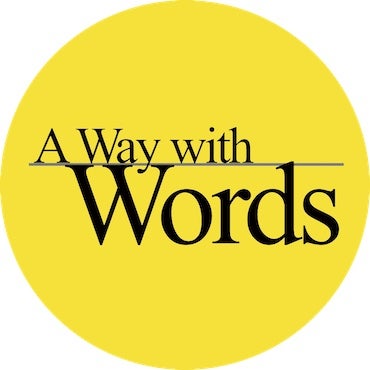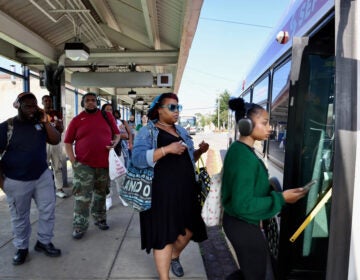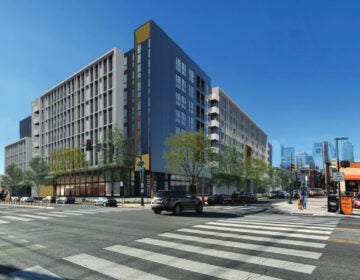Steinberg: Context is everything
Opening essay in inaugural issue of CONTEXT, a journal of Philadelphia AIA
By Harris M. Steinberg
ALL THAT WE DO, THINK AND FEEL IS RELATED IN SOME WAY
— connected if you will to a larger context. Context informs our choices. It is a frame of reference, a link to a larger whole as well as a foil against which the great drama of life is displayed. Context is perspective.
Great art puts the world in context. Science helps us understand the complex relationships between the fragile balance of parts that make up the natural world. In literature, altering the placement of a single word can radically change meaning. And in planning and physical design, relating to and understanding existing conditions gives resonance to built work. Architecture, landscape architecture, city planning, historic preservation and the environmental arts all grow out of and inform the physical context around us; both shaping the world about us and piquantly reflecting it back. Done well, new works of architecture and design flow seamlessly within the sweep of the historical continuum; adding important voices to the conversation across the ages that is design. Done poorly, they stick out like sore thumbs.
Great art puts the world in context. Science helps us understand the complex relationships between the fragile balance of parts that make up the natural world. In literature, altering the placement of a single word can radically change meaning. And in planning and physical design, relating to and understanding existing conditions gives resonance to built work. Architecture, landscape architecture, city planning, historic preservation and the environmental arts all grow out of and inform the physical context around us; both shaping the world about us and piquantly reflecting it back. Done well, new works of architecture and design flow seamlessly within the sweep of the historical continuum; adding important voices to the conversation across the ages that is design. Done poorly, they stick out like sore thumbs.
Which isn’t to say that there are rules for how to be contextual.
Primarily, though, it’s about listening, looking and understanding relationships. We humans exist in a social, cultural, economic, political, geographic, historical and aesthetic life-matrix. In an engaged society, all of these forces are co-dependent, working together to bolster, support and validate the others. When we don’t value interconnectedness we often retreat into silos of self-interest engaging in work that benefits only a select few. When we do cross boundaries and allow ourselves to be informed by the panoply of life’s richness we can create work that speaks to the broad spectrum of human existence.
Primarily, though, it’s about listening, looking and understanding relationships. We humans exist in a social, cultural, economic, political, geographic, historical and aesthetic life-matrix. In an engaged society, all of these forces are co-dependent, working together to bolster, support and validate the others. When we don’t value interconnectedness we often retreat into silos of self-interest engaging in work that benefits only a select few. When we do cross boundaries and allow ourselves to be informed by the panoply of life’s richness we can create work that speaks to the broad spectrum of human existence.
Isn’t architecture as much about what we leave behind as what we make for today?
Finding our way towards an engaged architecture that pulls from and is informed by a wide chorus of voices is our challenge. Making architecture that is both grounded and real, both beautiful and ordinary will assure its relevance. Architecture alone can’t solve society’s ills — we learned that the hard way through the cold hand of urban renewal. But architects, in concert with economists, social scientists, politicians, citizens, developers and others can help find solutions to the real and vexing challenges of our generation like homelessness, the lack of affordable housing, promoting equitable development and finding places for minorities in the design and construction trades.
Finding our way towards an engaged architecture that pulls from and is informed by a wide chorus of voices is our challenge. Making architecture that is both grounded and real, both beautiful and ordinary will assure its relevance. Architecture alone can’t solve society’s ills — we learned that the hard way through the cold hand of urban renewal. But architects, in concert with economists, social scientists, politicians, citizens, developers and others can help find solutions to the real and vexing challenges of our generation like homelessness, the lack of affordable housing, promoting equitable development and finding places for minorities in the design and construction trades.
Our task is to practice in as broad a context as possible and then push its boundaries even more.
Listening to context helps us see the linkages and interrelatedness of people across time,
space and place. Context both grounds and liberates us. By acknowledging that we are
not alone, we enrich not only ourselves but the communities we serve.
Listening to context helps us see the linkages and interrelatedness of people across time,
space and place. Context both grounds and liberates us. By acknowledging that we are
not alone, we enrich not only ourselves but the communities we serve.
Context is everything.
Harris M. Steinberg, FAIA
Chairman, Context Editorial Board
Chairman, Context Editorial Board
WHYY is your source for fact-based, in-depth journalism and information. As a nonprofit organization, we rely on financial support from readers like you. Please give today.






